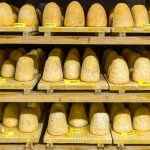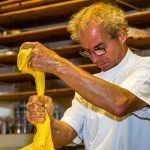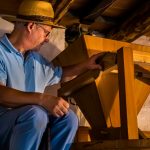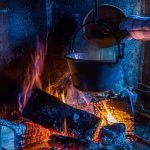Throughout the Alpine region you can still find many traditional products, grown or produced with passion and expertise. During our travels in Switzerland we noticed again and again: here not only a linguistic, cultural and scenic diversity prevails, here also a culinary pluralism has established itself. In Ticino, with its many narrow side valleys and small mountain villages, there are still culinary treasures to be discovered today. These discoveries are always connected with the acquaintance of passionate keepers of old knowledge and traditions. Without these people, some of whom have dedicated their entire careers to a single subject, much culinary heritage would already have been lost.
Culinary ambassadors from Ticino
Zincarlin, a cone-shaped raw milk cheese, is a culinary specialty found only in the Valle di Muggio. The fresh cheese, which was still produced in the 19th century by many families in the valley according to their own recipe, has only been on sale again since 2004. In 2001, at the annual chestnut festival in the Muggio Valley, the president of Slow Food Ticino tasted the small cone-shaped cheese with its intense flavor. He then found the cheese and its history worthy of becoming part of the Slow Food family. Marialuce Valtulini still knows the cheese from her own family tradition and is one of the few women in the valley who are once again involved in the production and marketing of Zincarlin.
In the old town of Locarno, Arno Antognini has been transforming rich ingredients such as butter, eggs, candied fruits and nuts into a light and at the same time succulent pastry for over 30 years. The pastry chef is known far beyond the country’s borders for his excellent panettone. It is the power of the sourdough, the Lievito Madre, which gives the Panettone its wadded lightness. Hard to believe, but the basic dough at Pasticceria Marnin is 70 percent butter. All year round, everything in the house in Piazza San Antonio revolves around the Christmas classic. Unlike in Italy, panettone is eaten all year round in Ticino.
He is the man with the straw hat. For many years Ilario Galbani has been working on the resurrection of Farina Bona. The last miller of Vergeletto in the Onsernone Valley died in 1958 and no one continued the tradition for which the valley was widely known after her death. In a period of 20 years Ilario discovered the almost forgotten secret of Farina Bona from Vergeletto. How did the special aroma come about, the almost beguiling fragrance that is transmitted to the baked product?
Gabriella Monfredini is the host of Swiss Tavolata, where Swiss cuisine from their own farm, from their own garden or, as in Gabriella’s case, fish from their home lake are served. Pike, chub, trout and also tench swim in Lake Lugano. Gabriella Monfredini has spent her whole life on and around Lake Lugano. Even her mother loved to fish for a living and often took her out on the lake.
Photos: Food and culinary treasures from Ticino
If you move the cursor over a photo, further information will be displayed.
The Alpine regions – hiking and culinary delights
From the Alpine region, here Switzerland our editorial staff offers other topics from the cantons of Valais, Ticino, Zurich and Basel-City. Each topic can be expanded in detail.
Digital Detox in Ticino
Instead of simply flipping a switch, it’s better to always carry a box of matches at Ca’Vegia in the small town of Cerentino in Ticino. It is advisable in daylight to freshly stock the candlesticks and fetch another pitcher of fresh water from outside. Where do I cool my drinks and how long do I need until the fire is burning and the polenta is boiling in the copper kettle? These are the questions you ask yourself when there is no electricity in the house. A deceleration of a very special kind.



































